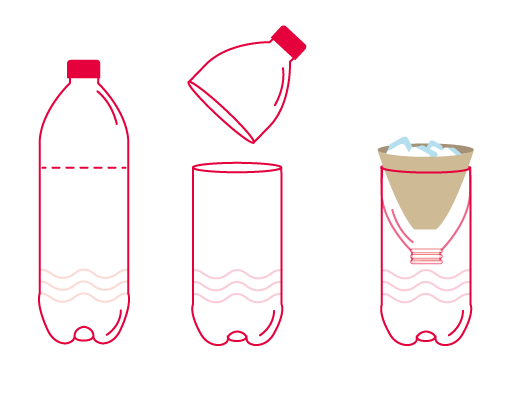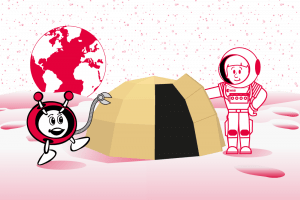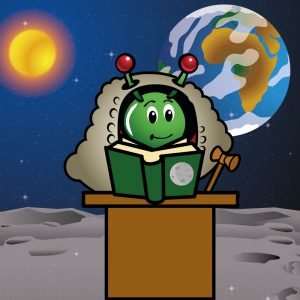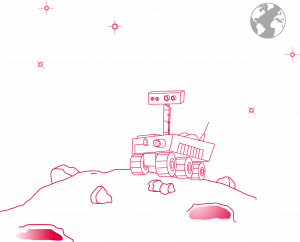Wasser auf dem Mond - Filtern von Mundeiskernen zur Gewinnung von Wasser
Mit dieser Ressource sollen die Schüler einen Tag lang aufzeichnen, wie viel Wasser sie für verschiedene Aktivitäten verbrauchen.
Danach folgt eine experimentelle Aktivität im Klassenzimmer, bei der sie vorbereitete "Mundeiskerne" verwenden und diese filtern, um Wasser zu gewinnen.
Anhand der Ergebnisse der ersten und zweiten Aktivität berechnen sie, wie viel Mundeis sie graben oder bohren müssten, um genug Wasser für einen Tag zu haben.
Die Ressource regt zu Diskussionen über Wassernutzung und -recycling sowohl auf der Erde als auch im Weltraum an.
Lernziele
Altersspanne:
8-12 Jahre alt
Zeit
Vorbereitung: 45 Minuten
Lektion: insgesamt 2 Stunden - aufgeteilt in mindestens zwei Teile
Ressource verfügbar in:
Englisch, Dänisch, Französisch, Deutsch, Polnisch, Spanisch, Schwedisch und Rumänisch
Aktion 1: Wie viel Wasser verbrauchst du jeden Tag?
Bei dieser Aktivität halten die Schüler anhand einer Tabelle fest, wie oft sie eine Aufgabe erledigen, für die sie Wasser benötigen, einschließlich Aktivitäten wie die Benutzung der Spülmaschine oder das Kochen, die auch zu Hause stattfinden. Im Klassenzimmer berechnen sie dann, wie viel Wasser sie insgesamt an einem Tag verbraucht haben.
Ausrüstung
Aktion 2: Von schmutzigem Eis zu sauberem Wasser
Die Schülerinnen und Schüler führen ein Experiment durch, um Wasser aus gefrorenen Mondbodenproben zu gewinnen und vergleichen es mit der Wassermenge, die sie auf dem Mond benötigen würden.

Ausrüstung
Aktion 3: Wassererhaltung auf der Erde und dem Mond
Im Anschluss an Aktivität 1 (und eventuell 2) sollten die Schüler überlegen, wie sie den Wasserverbrauch auf der Erde und auf dem Mond reduzieren könnten.
Ausrüstung
Wussten Sie das?
Die Astronauten auf der Internationalen Raumstation recyceln den größten Teil des Wassers, das sie verbrauchen - etwa 75%. Das Wasserrückgewinnungssystem kann Wasser aus dem Urin und dem Atem der Astronauten zurückgewinnen. Dieses wird gefiltert und gereinigt und kann wiederverwendet werden. Ein Sprichwort lautet: "Der Kaffee von heute ist der Kaffee von morgen"!
Astronauten auf der Internationalen Raumstation verbrauchen in der Regel nur ein Zehntel so viel Wasser wie die Menschen auf der Erde. Auf dem Mond müssten die Astronauten wahrscheinlich sogar noch weniger Wasser pro Tag verbrauchen!

Andre Kuipers und das Wasser in der Ausgabe
Schlüsselwörter:

Moon Shelter - Erforschung verschiedener Schutzräume auf der Erde und im Weltraum
Kurzbeschreibung: In dieser Reihe von Aktivitäten analysieren die Schülerinnen und Schüler die Bedeutung von Unterkünften zum Schutz auf der Erde und im Weltraum. Die SchülerInnen vergleichen

Mondverfassung - Wie würde eine zukünftige Mondgemeinschaft organisiert sein?
Kurzbeschreibung: In dieser Ressource diskutieren die Schülerinnen und Schüler einige organisatorische und soziale Merkmale einer zukünftigen Siedlung auf dem Mond und setzen sie in Beziehung zu ihren

Moon Rover - Bau eines solarbetriebenen Rovers
Kurzbeschreibung: In dieser Aktivität vergleichen die SchülerInnen die Vor- und Nachteile von erneuerbaren und nicht-erneuerbaren Energiequellen und untersuchen einfache elektrische Schaltkreise.



